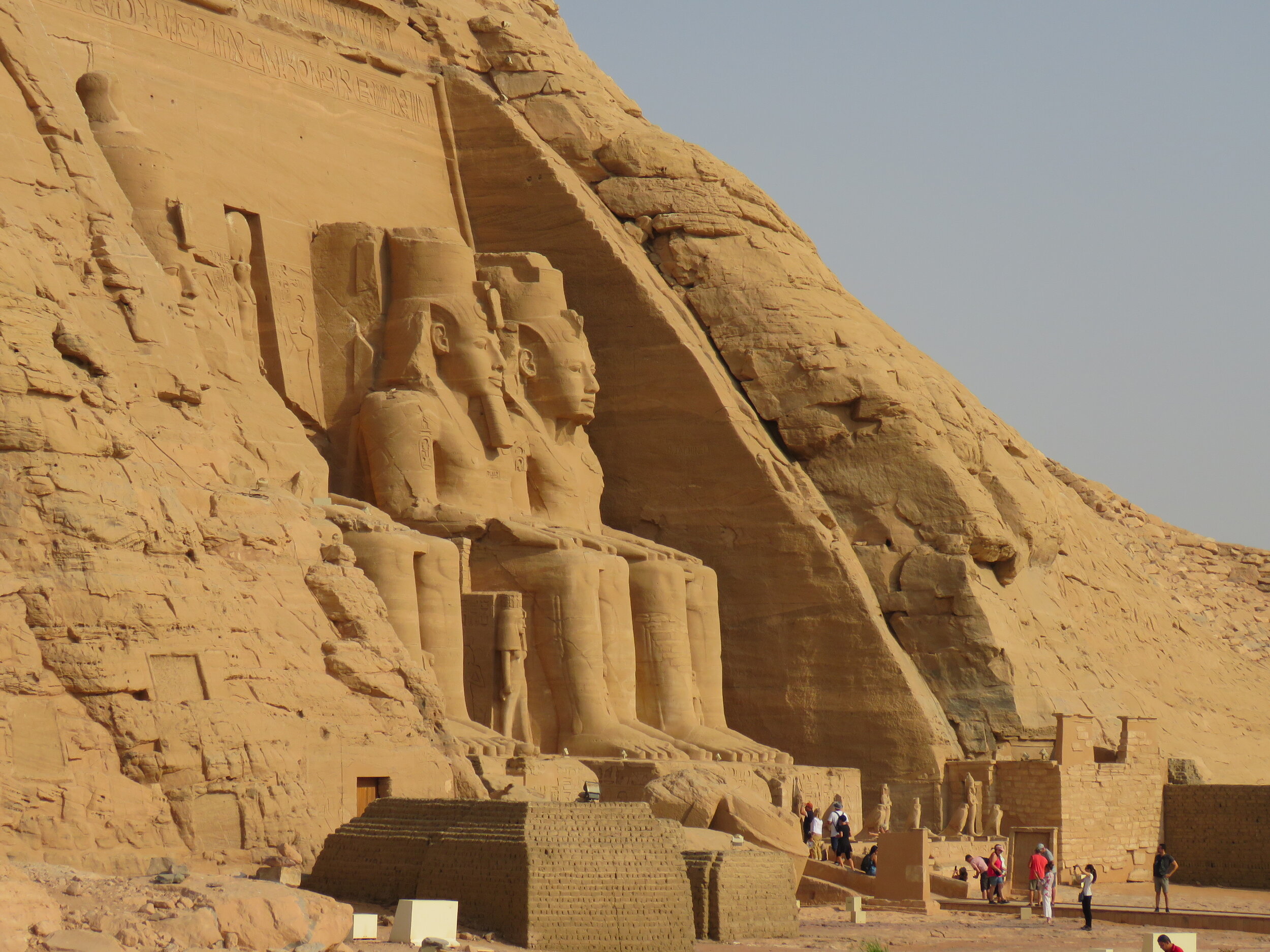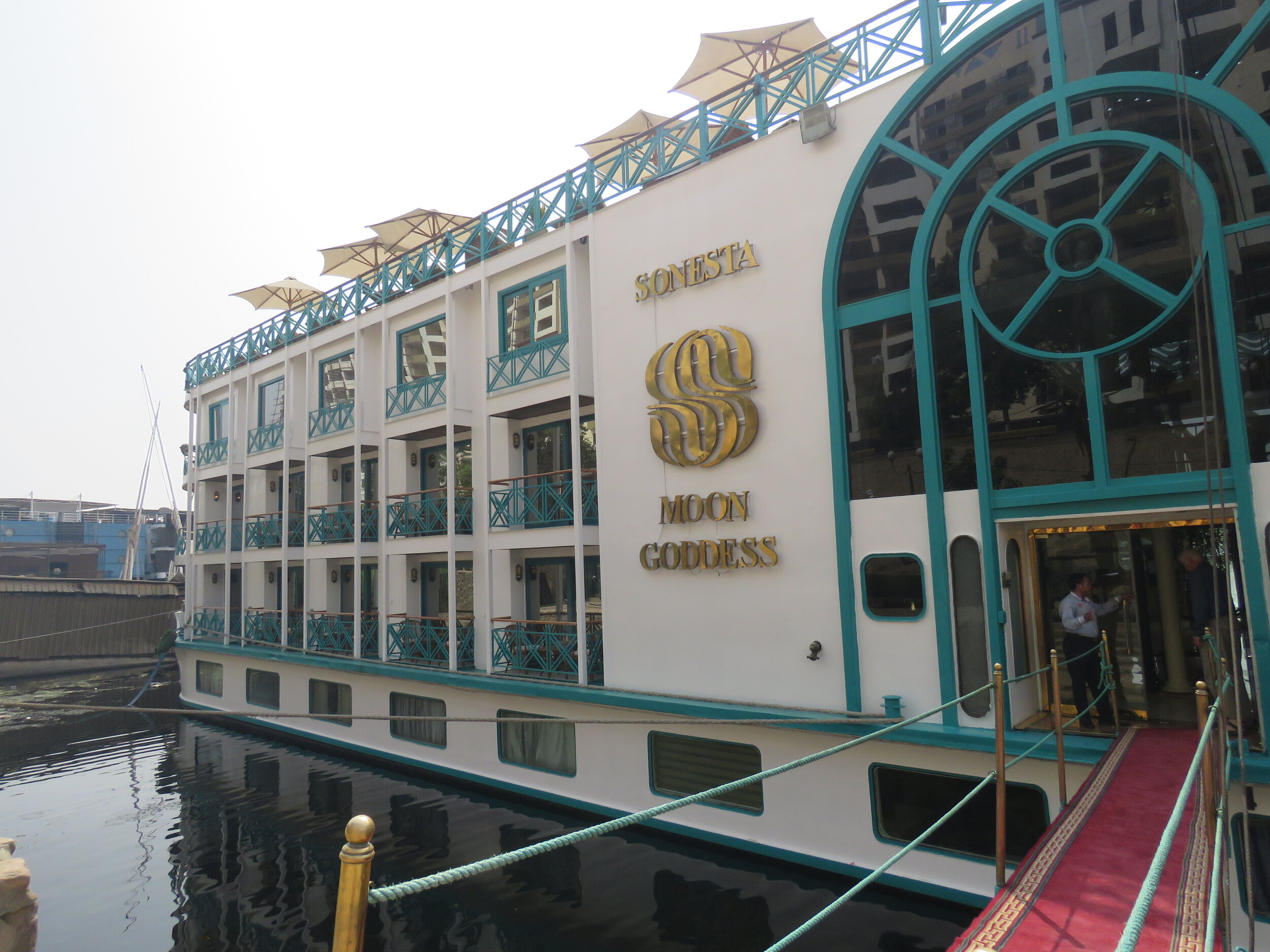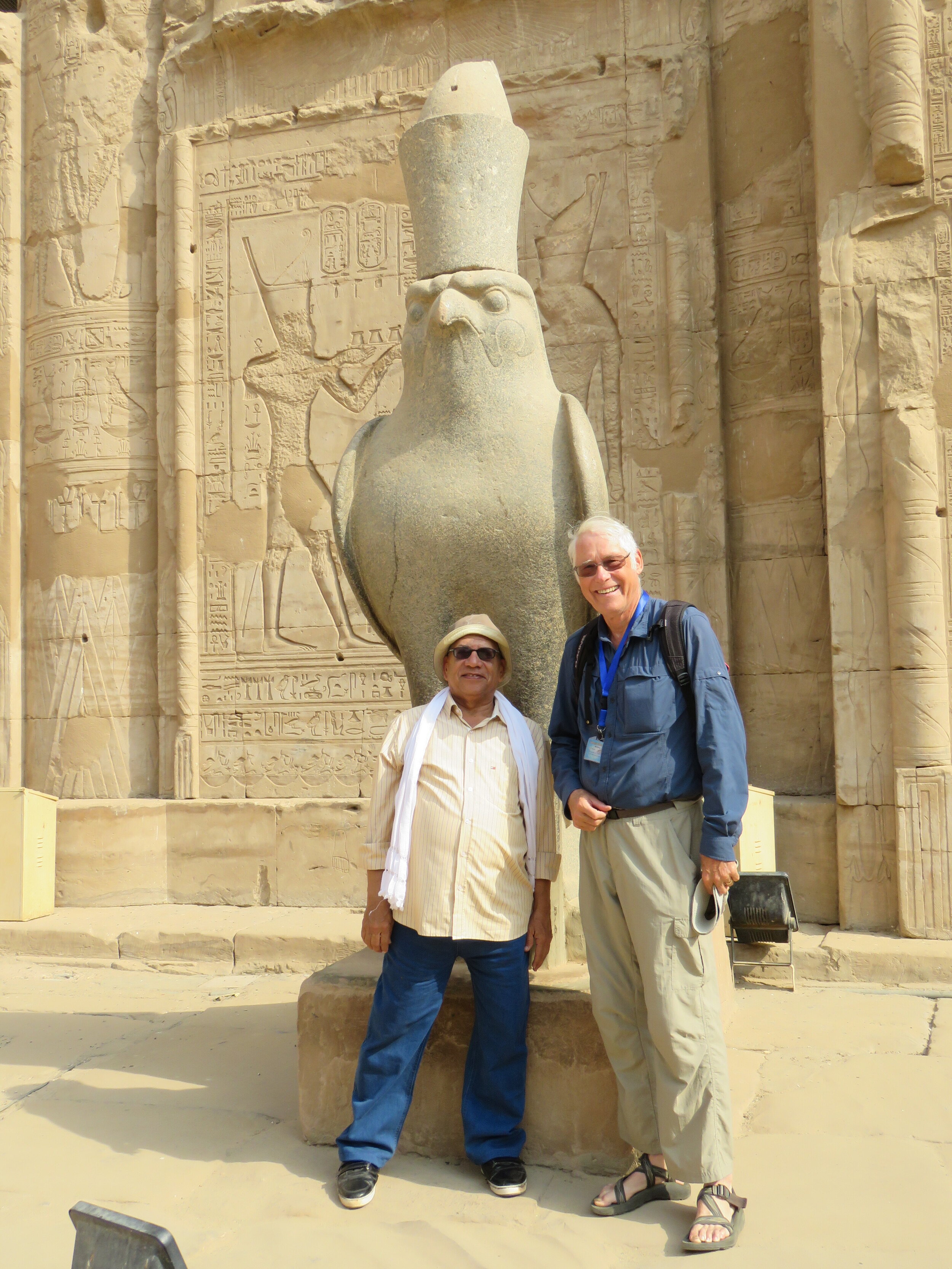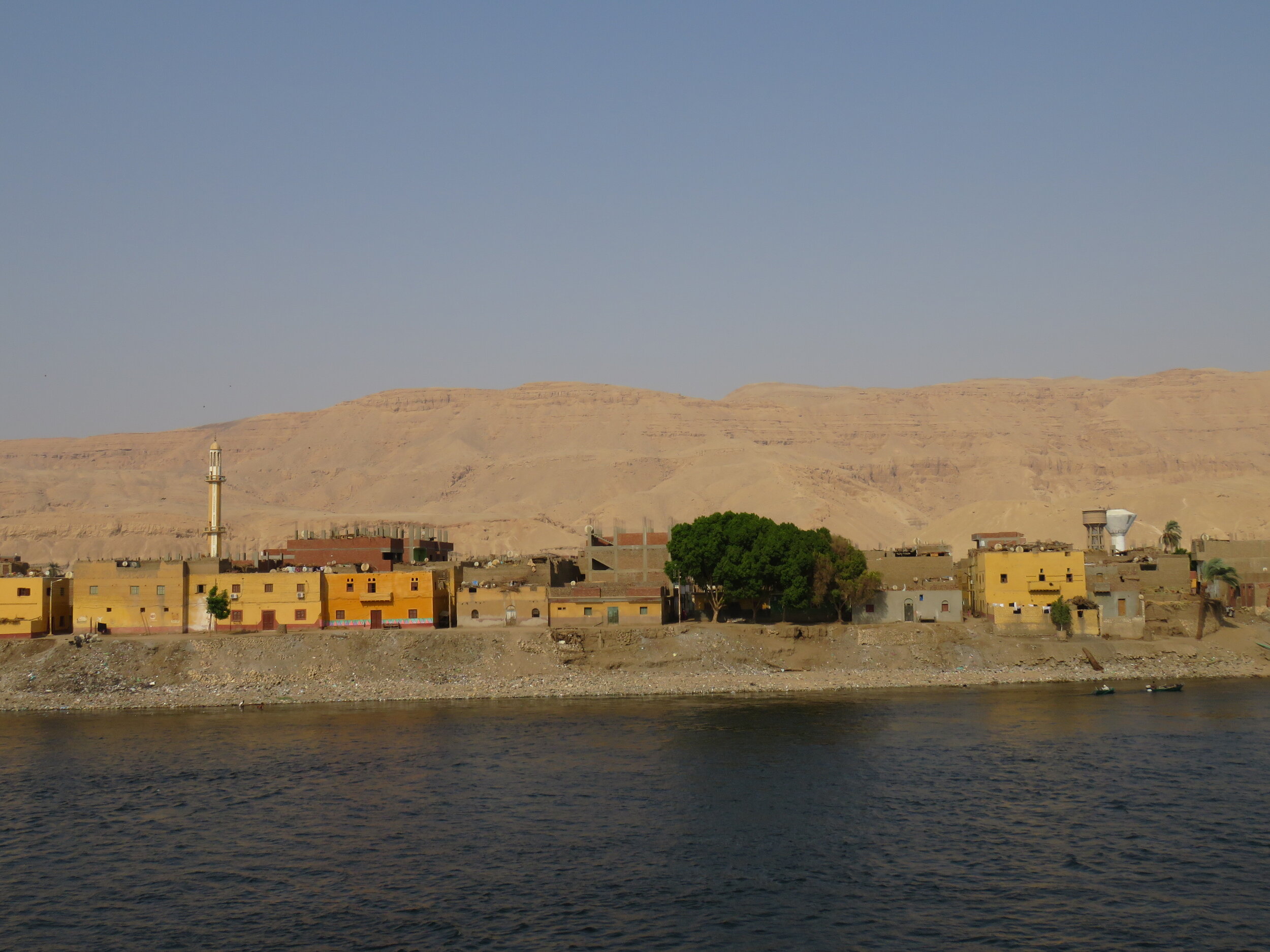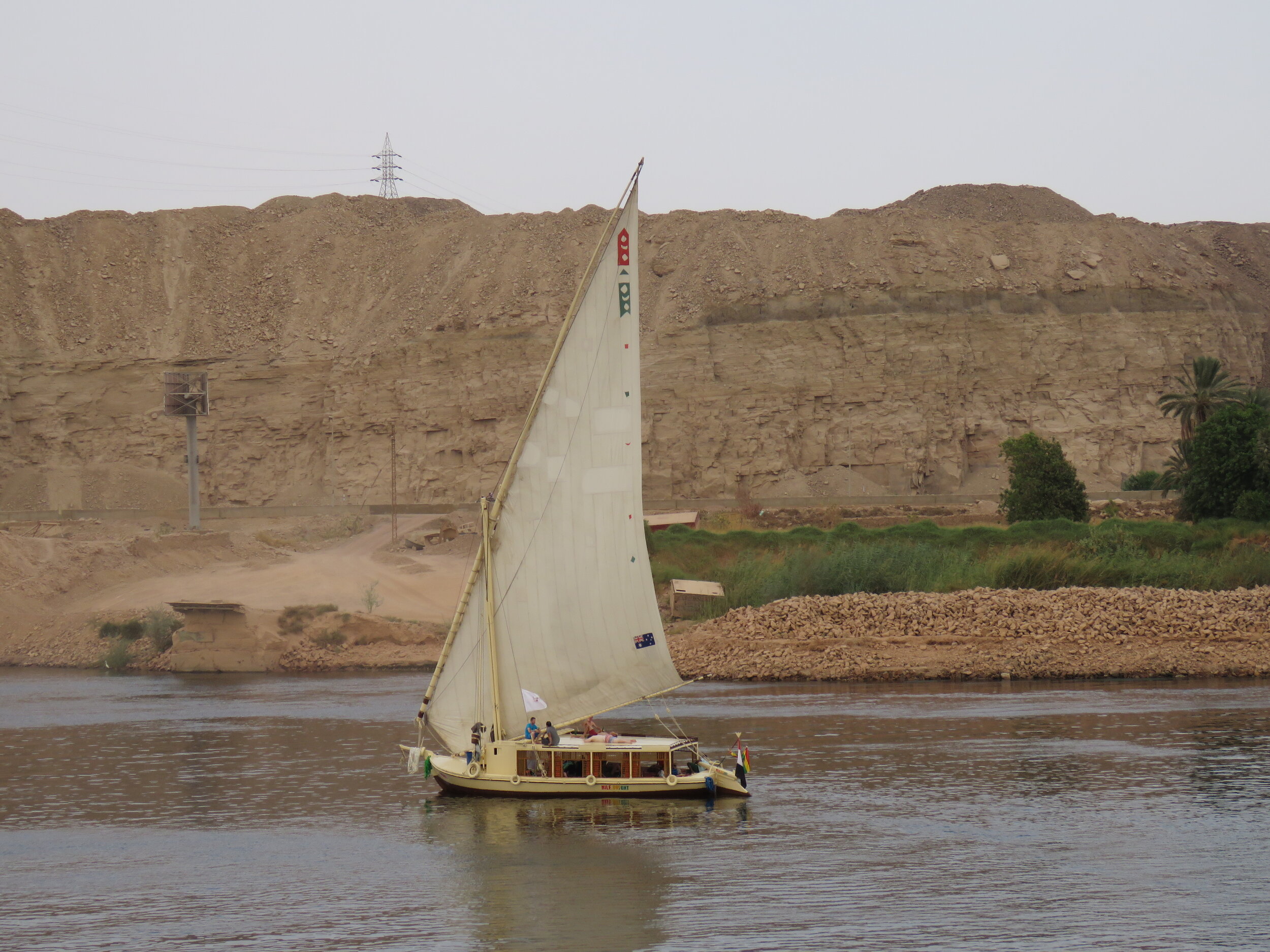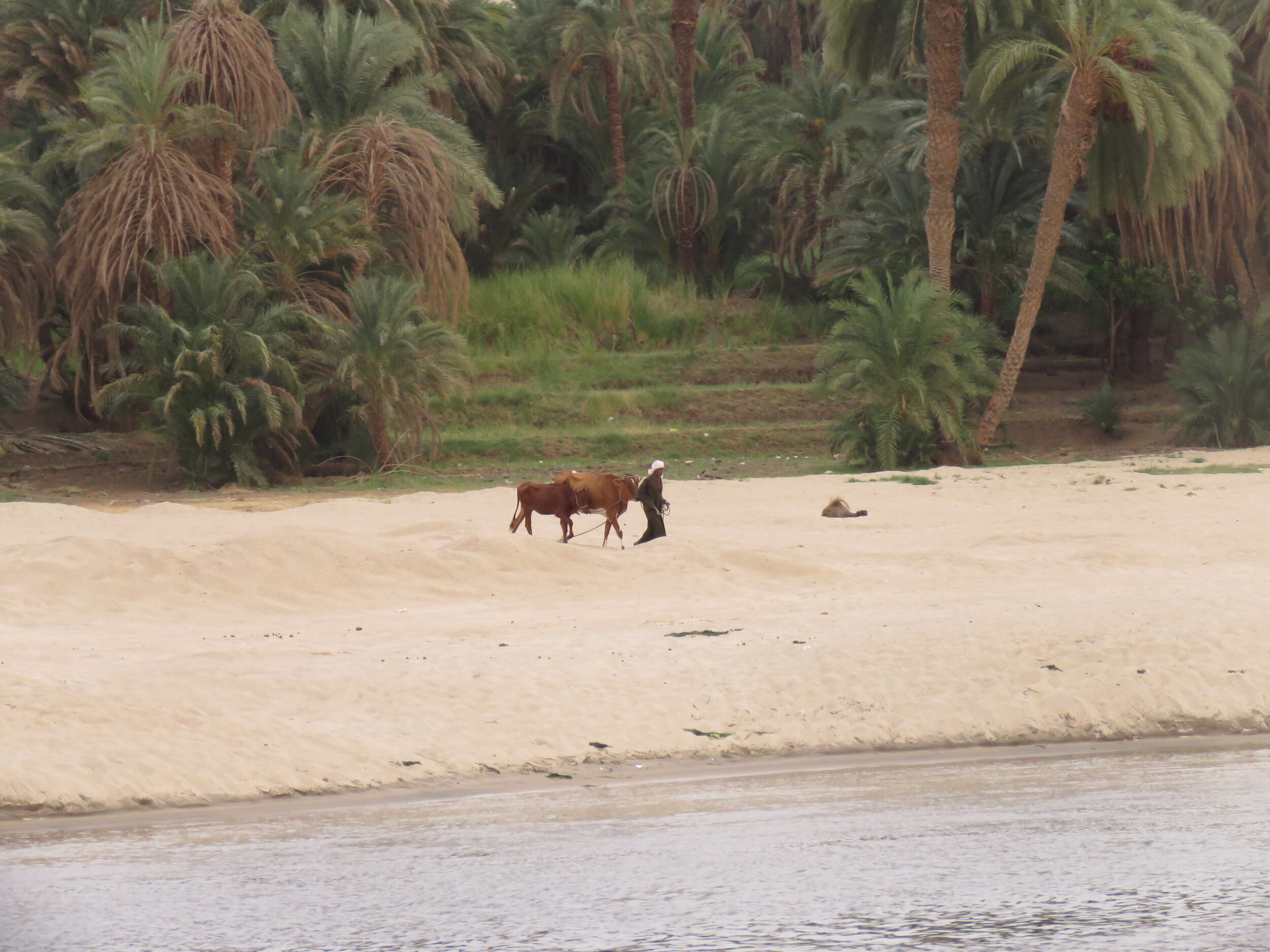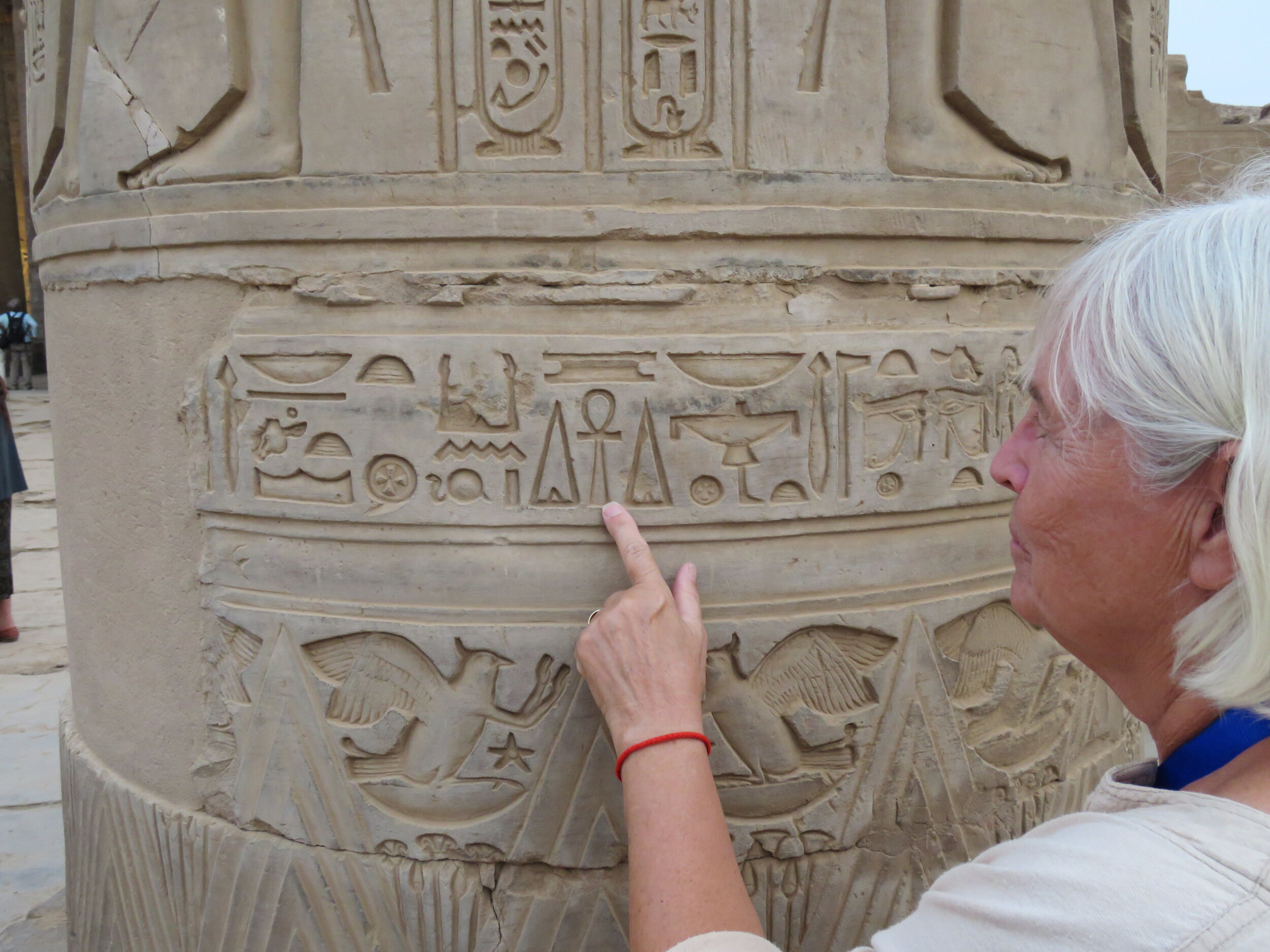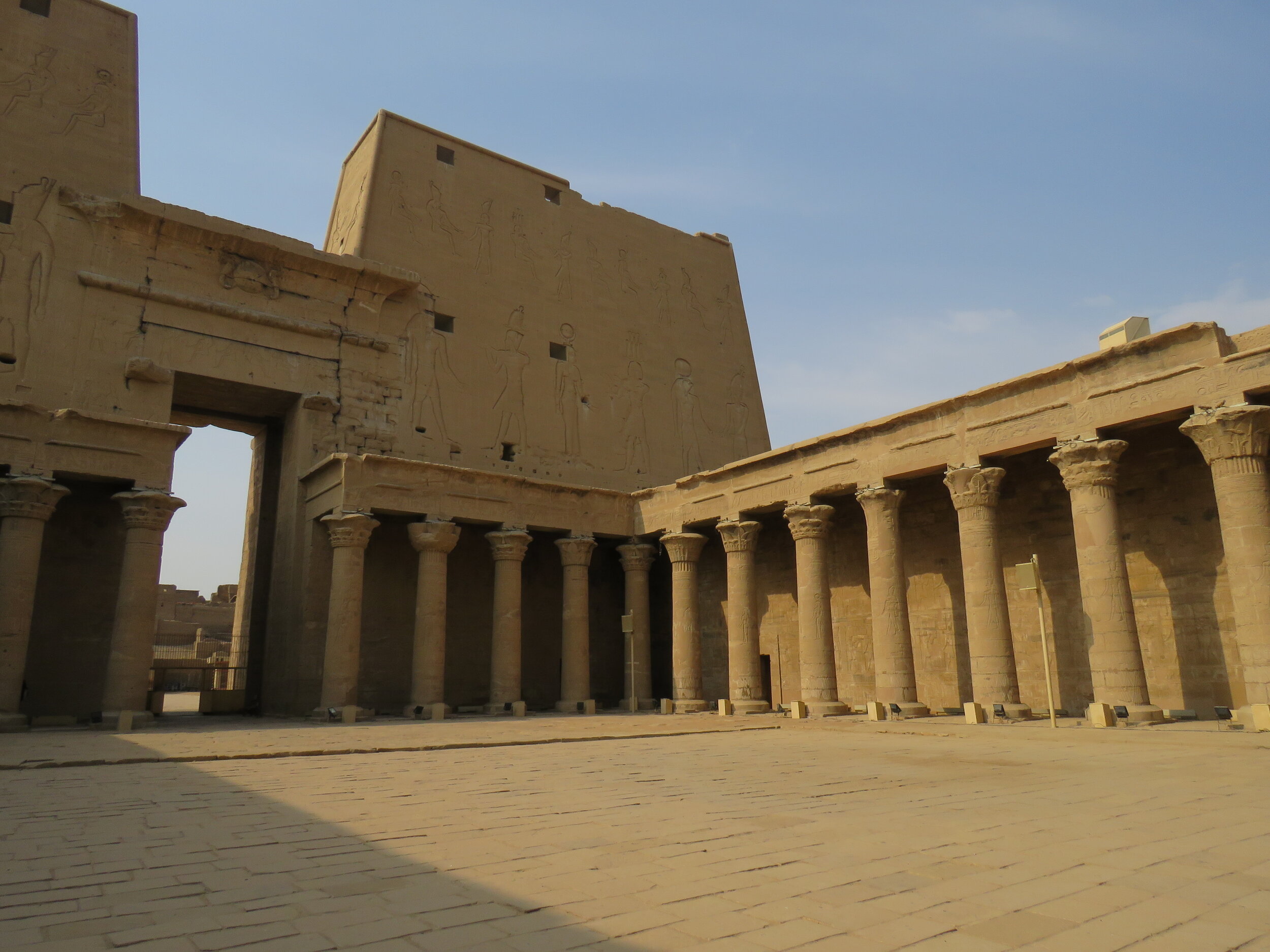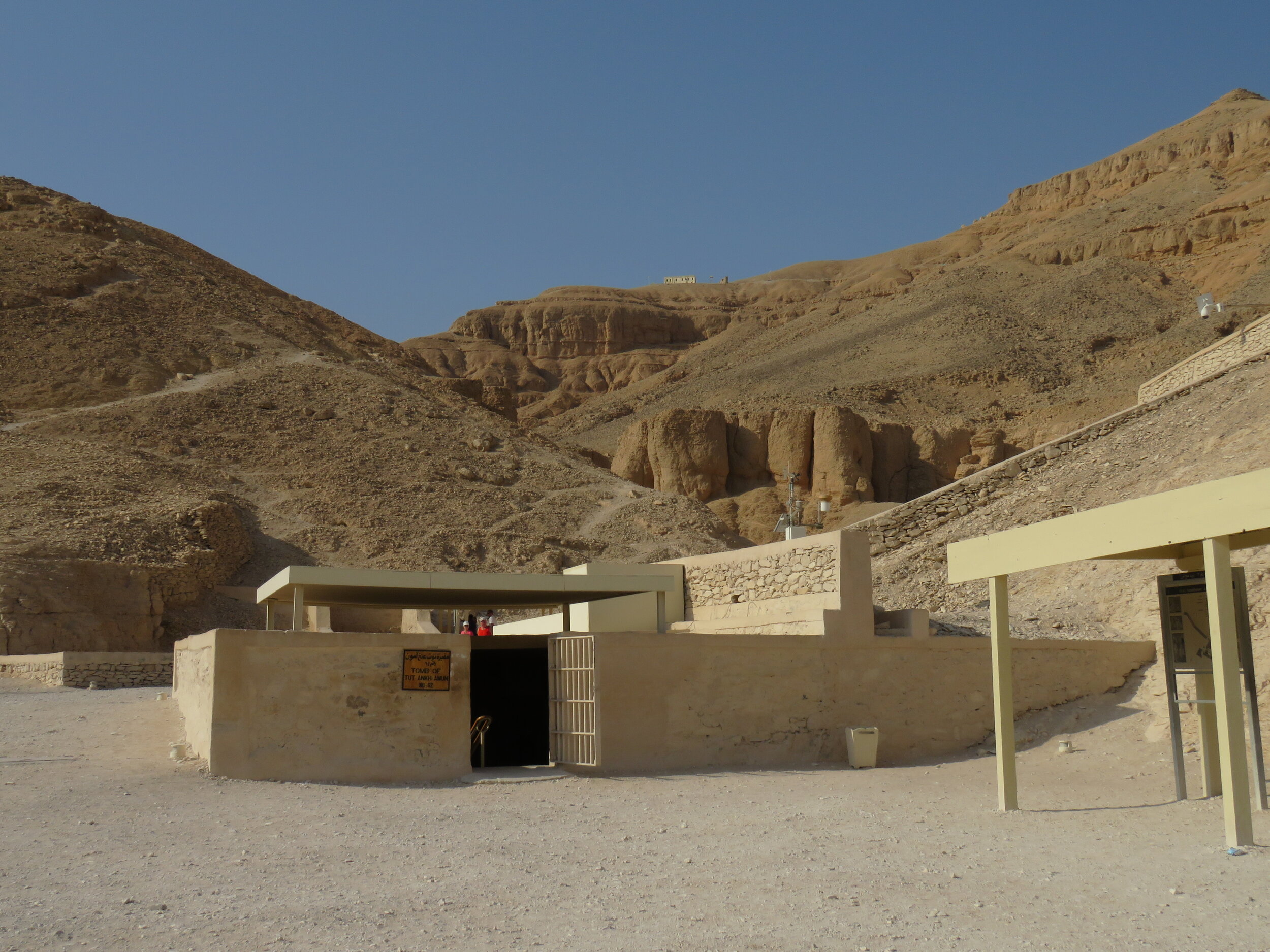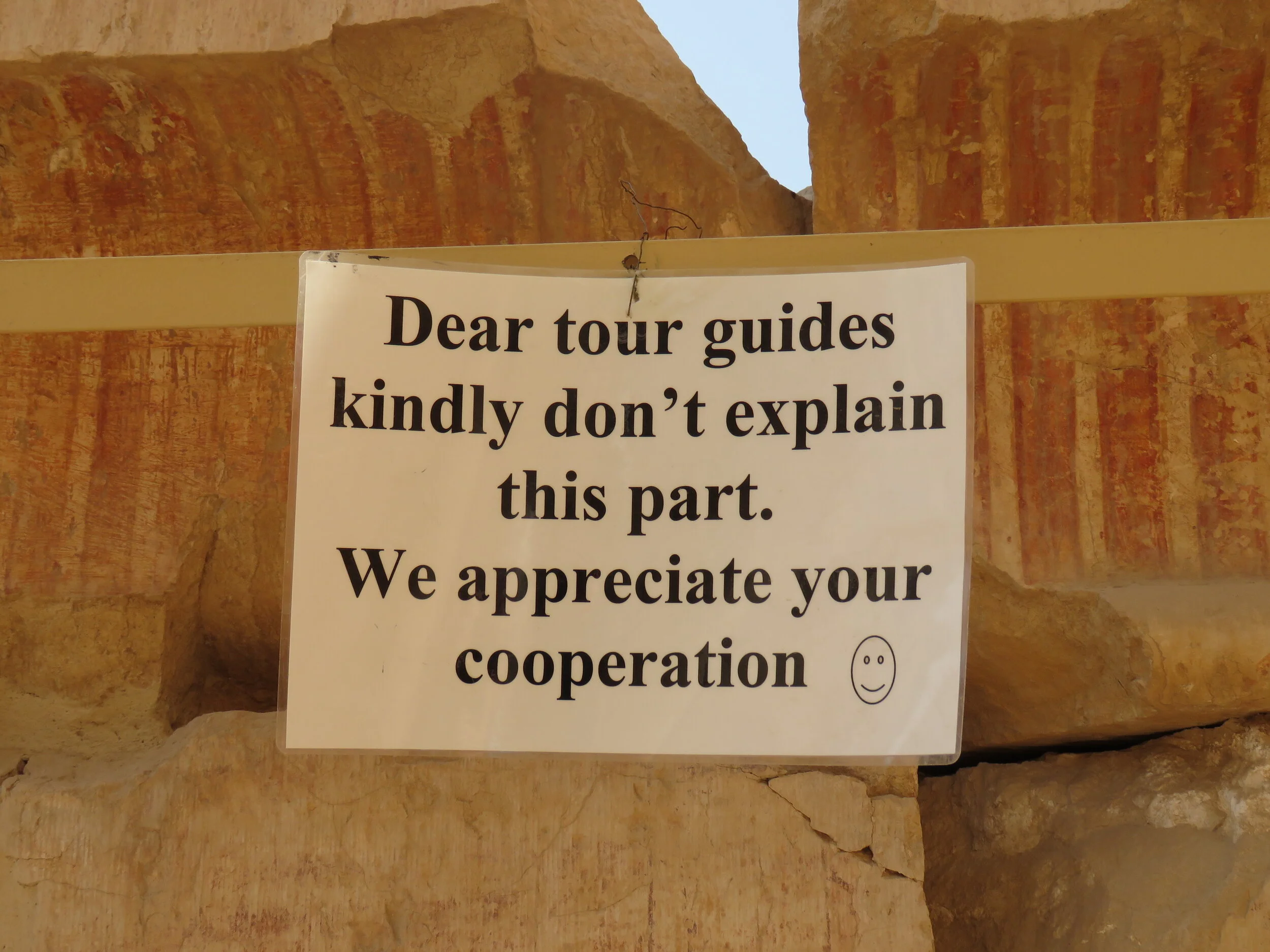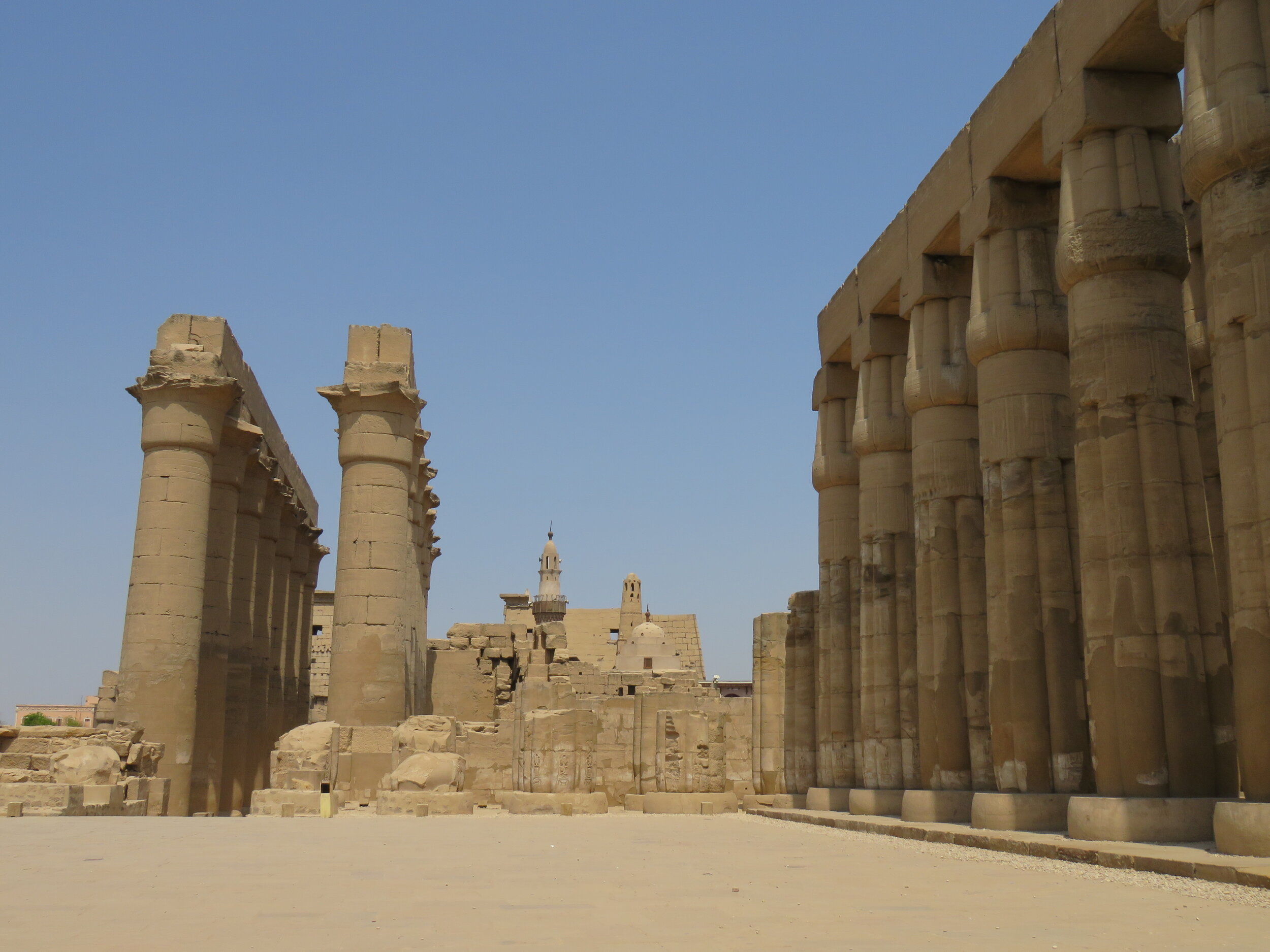Edge of the Sahara
Egypt - fabled land of sphinx and pyramids, of the river Nile and Cleopatra. I didn’t think I’d ever visit here. But - thanks to my books My Librarian is a Camel, the story of libraries around the world, and thanks to Stepping Stones, the story of a refugee family - I received an invitation from an international school in Cairo to come and do author presentations for the students. Of course, that was also an opportunity to plan some travel in Egypt. But where do you start and what is possible?
We started by getting books from the library, including travel guides. We also borrowed several DVD’s, even a copy of the classic Cleopatra movie with Elizabeth Taylor and Richard Burton. We visited the Egypt exhibit in the BC Museum and read many nonfiction books.
Lake Nasser
Then we delved into travel sites like Tripadvisor to read about other people’s experiences. We like to travel on our own rather than with a tour group so started by counting the days we had to decide where to go.
Arriving in Cairo, we connected immediately to a local flight to Aswan, in the south of Egypt. We knew we would arrive very late, around midnight. After much research I found the perfect itinerary: Booking.com showed a Nile cruise of 4 days leaving Aswan on a Wednesday and ending in Luxor. The rate was very reasonable and so I booked it, even though a Cairo travel agency insisted there was no such cruise from south to north. My own online research paid off.
Prior to sailing, this boat company offered an excursion to Abu Simbel, ancient temples in the very southern tip of Egypt on the border with Sudan. We booked it but would be picked up very early. Since we arrived at midnight, I searched for a very cheap hotel and found one for about 30 euros. It was cheap but clean and they even had a breakfast box ready for us when we left at 4 AM.
Soon we found ourselves heading south, just the two of us with a driver, through the western reaches of the Sahara Desert. After the Aswan Dam the road was long and boring. The most hilarious thing (and at the same time the most precarious thing) was that Egyptian drivers turn off their headlights at night. I’m not sure if they figure it’s cheaper that way, but they only flashed on their headlights once in a while and then would be pitch dark again. So we did get a glimpse of a car approaching in the road, in the dark of night, but we did not see the cars until they flashed on their lights again. It felt like a game of cat and mouse… Despite this, we dozed for 3 hours but by the time we arrived it was light and still relatively cool. We walked around a mount and suddenly we came face to face with ancient history…
Ramesses and Nefartari
Twenty meters tall, the sitting figures of Pharaoh Ramesses II and Nefertari were carved more than 1,200 years before Christ. The sheer size and precision of the decorations is awe inspiring. The temples are dedicated to Ramesses and his wife Nefertari, (our guide called them Ramsex and Never-tired because they had something like 42 kids…).
With us in front you get a sense of size of these figures carved nearly 4,000 years ago.
She is shown here in the same size as him, a major exception. In most places females are depicted much smaller than the males. Besides the incredible exterior, you can enter the temples. I had always imagined these ancient temples as small and dark. On the contrary, they are huge and light. At 30 meters high, the ceilings and walls are entirely covered in hieroglyphs. Having seen cave paintings in Australia and many other places, I imagined that hieroglyphs would be the same: a few found here and there, small and faded. But no - these hieroglyphs look as if they were carved yesterday. They cover entire walls and tell stories that jump right off the ‘page’. Even if you can’t read the letters and words, the pictures are clear: they pay tribute to the good life of the pharaoh and what he did. You see people fishing, specific fish that are recognizable to this day. They carry pots and fruits. They dance and pray. You can see the clothing they wore and who they met. It is incredible - an ancient graphic novel of daily life.
These temples and statues at Abu Simbel would have been lost forever when the dam was build that now forms Lake Nasser. So, thank goodness, the authorities had the entire site moved from down below to up high. With painstaking precision, with cranes and helicopters, the sandstone was secured and hoisted up to a level that would be well above the new water level.
The entrance to the temple is in the center of the figures.
The lake was created but Abu Simbel’s temples continue to stare across the land, more than 3,000 years after they were conceived.
We were lucky to be assigned an amazing guide from Abu Simbel to Luxor. Mr. Hamed is a master egyptologist, he can read hieroplyghs like we read our alphabet. He knows everything and taught most guides here.
““Egypt is the gift of the Nile.” ”
Upon our return to Aswan (population 2 million), we were delivered to our cruise boat. These cruise boats do not resemble western cruise ships. Rather, they are large flat bottom boats with about 5 decks stacked like an oval shaped wedding cake. A gang plank led to a large glass door through which we entered a two storey tall lobby with stained glass ceiling. From here a curved wooden staircase led down to the dining room and up to two decks of cabins, as well as an outer deck with swimming pool and easy chairs.
The amazing Mr. Hamed who was our private guide for the entire trip down the Nile.
The top deck
Our cabin was a lovely room with kingsize bed, two easy chairs, a small fridge, a bathroom and a balcony with two chairs. The total fare for a 4 day cruise, including all food except drinks, all sightseeing, all entrance fees for archeological sites, a private guide for the entire trip (which we had not realized until it happened), and all transportation to and from the boat, came to about 600 US for both of us.
The capacity of the Sonesta Moon Goddess, our ship, was 225 people but we cruised with only 40 people on board, an illustration of how tourism has declined across Egypt. At major sites, our guide would sigh “There used to be long line-ups here to enter the tomb,” but now we walked right up and often were one of just a few visitors. Most of our photos show no other people.
We had no idea that our fabulous guide from Abu Simbel would accompany us for the entire trip. He had a room on the ships and ate all meals there with other guides. Guides can speak a wide variety of languages: we heard Spanish, French, Italian, German and more. Ours was a very knowledgable guide who had taught many of the younger ones, had a wicked sense of humour and knew everything!
Floating down the Nile
Soon we set sail on the Nile. Egypt is a bit of an upside down country! The south is called Upper Egypt, the north is Lower Egypt. The Nile, longest river in the world, flows from south to north. Thus you travel upstream to go south and down stream to go north. Confusing.
The boat sailed fairly fast north with the strong current. We saw Elephantine Island near Aswan and soon green strips with corn fields and palm trees streaked past. Little barefooted children came running down muddy slopes yelling “Hello! Hello!”, waving furiously. It was a scene straight from some of my favourite travel books (See: Books)
A traditional felucca on the Nile
We saw cows and goats and dogs. And lots of cats. Of course, Egypt is the land of the mysterious cat and they dwell everywhere in great numbers. We listened to the melodious call of prayers floating on warm wafts of air as we sailed by. Men led donkeys to the river to drink and women hung laundry and blankets from glass-less windows. In larger towns, houses are build of bricks but often houses are the same colour as the local mud.
This very southern region of Egypt is part of the land where the original people lived, the Nubians. They are more African looking and speak their own language.
Without the river Nile, Egypt would be all desert. One broad strip of green runs the length of the country along either side of the river. From the air, the strip seem to range from a few hundred feet to a couple of kilometres wide. Before the dam this was the river’s natural flood plain where fertile silt was deposited with each flood. Since the dam, water is regulated but chemical fertilizer is now needed to grow grain, fruits an vegetables. The dam created Lake Nasser, which hosts about 30,000 crocodiles. All crocs were eliminated from the river itself so that people can once again use it for washing, swimming and leading their cattle to drink.
Our boat docked, together with several other river boats, immediately opposite the Temple of Kom Ombo where it is believed are the very first depictions of medical tools in the hieroglyphs. We also stopped at Edfu where we rode a horse drawn carriage to the temple. I was impressed by the size and height (37 meters) of the temples. Even though this temple was constructed in the century before Christ, it looks newly made as if from fresh cement. This is because often these temples were completely buried in sand and thus protected from the elements. Instead of a few, faded hieroglyphs I am blown away to see every inch of these gigantic monuments covered in letters and pictures that are as clear today as they were 4,000 years ago...
The number of temples, names of pharaohs, dates of construction and discoveries - it’s making my head spin. Egypt’s history is beyond anything I’ve seen before. Even if the carvings are similar to those I’ve seen at Angkor Wat or Aztec temples, these Egyptian monuments predate everything. I’ve never before been inside a 4,000 year old building, and frankly, it chokes me up. Here, you can touch history and connect with humans who lived thousands of years ago on the same earth.
During the cruise on the Nile we visit the temples of Karnak and Luxor. At Karnak, gigantic pillars tower over the visitors. It’s a huge temple complex and we walk around sphinxes and columns and walls with hieroglyphs. As an archeological site, Karnak was one of the most impressive though.
Entrance to a tomb.
Luxor, too, has interesting sites. I’m surprised at how different each ancient site is. Some have columns, others just facades. Some have tombs while others are a different kind of monument. In the fabled Valley of the Kings we walk around in blazing heat and made the trek down into some of the tombs. The long narrow walk way down is so low that we have to move bend over. I kept my arms over my head to protect myself from bumping my head on the low stone ceiling. But at the bottom it opened up to a large room which held the sarcophagus. I kept wondering what it would have been like to discover these amazing tombs and their gilded treasures.
Valley of the Kings. I felt like I walked on sacred ground.
Construction of the tomb was started as soon as a pharaoh ascended the throne. If he lived a long life it might get finished but often they had to rush unexpectedly when he died young. The hieroglyphs on the walls leading into and all over the temple, tell the king’s life story and of his heroic deeds. Everything that the king might need in his next life was provided: furniture, tools, food. The spirit had to recognize his body, so the outer sarcophagus was lifelike. The mummified body was inside several different caskets. The whole thing is pretty mind boggling. The model of hidden tombs at Valley of the Kings gives a good idea of the magnitude of the tombs and how secret passageways led all over the place.
In the Valley of the Kings, pyramids were built as mastaba’s - benches. They are lower mounds of stone. In the period that these were built, pharaohs did not want it known where their graves were for fear of grave robbers. Later, the great pyramids of Giza became the iconic symbols for pyramids, including the Djoser Pyramid at Saqqara, built in the 27th century BC.
The temple of Queen Hatshepsut (our guide told us to pronounced it as ‘hot chicken soup’) is visible from Karnak. It honestly looks like a huge modern building but dates back to some 1,460 years BC. All, or almost all, temples holding tombs are on the west bank of the Nile. This is because the sun sets in the west and ancient Egyptians believed that the sun died each night, to be reborn in the east. So the west bank of the Nile is the ‘death’ side and all life took place on the east bank.
Tourism is way down in Egypt. Our guide told us that before 2011’s random terrorist attacks, long line ups stood outside the tombs in the Valley of the Kings. Now there were some tourists but no line-ups. As at all major tourist attractions, there are plenty of vendors around. In Egypt bartering is not just a way to get the price down. It is an art form and part of the culture. With the lack of tourists, vendors are pretty desperate and incredibly persistent. They held up cloths and necklaces, walking along, yelling, sometimes even grabbing our arm. They did not easily take ‘no’ for an answer and it often took the intervention of our guide to get rid of them. One of most hilarious hawkers was on the Nile itself. We had to go through a lock and this little rowboat got itself stuck in the lock together with the cruise boat so that we couldn’t escape him. He hollered his prices and showed off his wares to those on the deck. Then he threw, with amazing aim, his tablecloths in plastic bags onto the deck. Some sales were made this way by tossing and yelling, throwing money or clothing back in a plastic bag in case it fell in the river. It seemed a moment from a sitcom.
Keep ‘em in the dark!
In one area, tour guides were asked not to block the way by speaking to their group in front of the entrance. The English translation of this sign left a bit to be desired… We do get a chuckle out of many English signs. It’s amazing they don’t get proof read, especially official signs in official places. There are spelling mistakes in airplanes (a note to “pasangers”), in restaurants (on our menu are “wuffles” and “beanutbutter”) and many other places.
In a next Egypt blog we will take you on to Cairo where we’ll meet King Tut himself and visit the pyramids.
• Mr. Hamed, our amazing guide: masteregyptologist@gmail.com
• Our cruise on the Nile: https://www.sonesta.com/africa/nile-cruises/sonesta-moon-goddess-nile-cruise-shiphttps://www.sonesta.com/africa/nile-cruises/sonesta-moon-goddess-nile-cruise-ship
• https://www.nationalgeographic.com/culture/article/tutankhamun
• Video about Tutankhamun: https://www.dailymotion.com/video/x2bb1pl
https://www.youtube.com/watch?v=yaRG7zkY8Nk (1 hour)
https://www.youtube.com/watch?v=hO1tzmi1V5g (6 minutes)
• Our favourite books about Egypt are here.
Luxor




